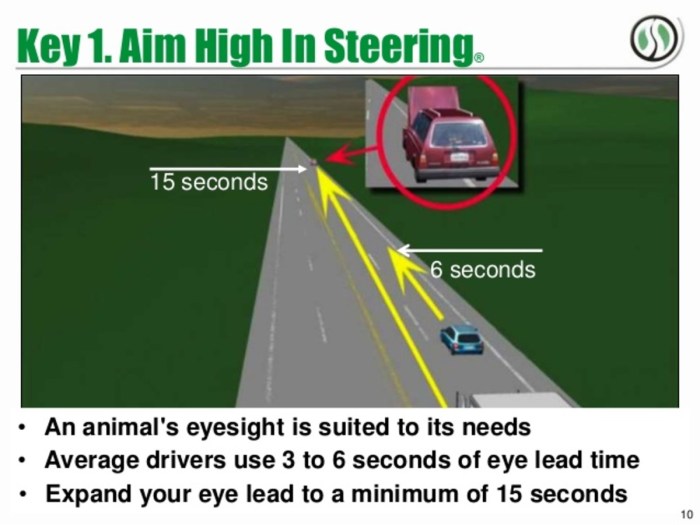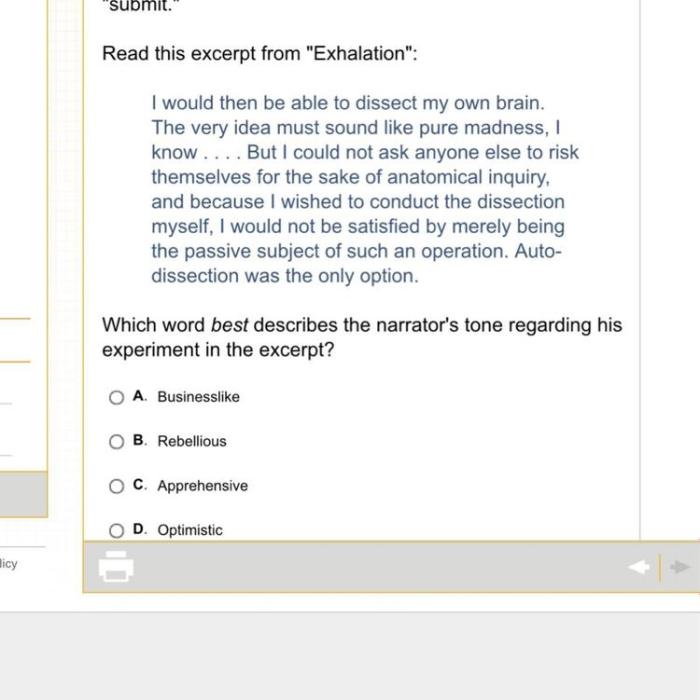Vision Lead: Counteracting High-Speed Risks
The vision lead should to counteract high speed – Vision Lead: Counteracting High-Speed Risks sets the stage for this exploration, diving into the critical role vision leads play in navigating the complexities of high-speed environments. This journey delves into the potential pitfalls of rapid operations, the strategies for mitigating them, and the crucial steps in fostering a culture of safety and control.
Imagine a world where rapid innovation and accelerated processes are the norm. While this speed can drive progress, it also presents significant challenges. This article examines how vision leads can guide their teams through this terrain, ensuring that the pursuit of speed doesn’t come at the cost of safety, efficiency, or informed decision-making.
Analyzing the Impact of High Speed

High-speed operations, while offering benefits like increased productivity and efficiency, also bring about a range of challenges and potential negative consequences. Understanding these impacts is crucial for ensuring safety, optimizing performance, and making informed decisions in high-speed environments.
Impact on Decision-Making
High-speed operations often require rapid decision-making, leaving less time for deliberation and analysis. This can lead to:
- Reduced Accuracy:Under time pressure, decisions may be made hastily, increasing the risk of errors. For instance, in a fast-paced manufacturing environment, a rushed decision on a production line adjustment could lead to defects or delays.
- Increased Stress:The constant need for quick decisions can lead to increased stress levels for operators and decision-makers, potentially impacting their performance and judgment.
- Overconfidence:The sense of control and mastery associated with high speed can sometimes lead to overconfidence, making individuals less likely to consider potential risks and challenges.
Safety Concerns
The inherent risks associated with high-speed operations are significant and require careful mitigation:
- Increased Risk of Accidents:The higher the speed, the less time there is to react to unexpected events, leading to an increased risk of accidents and injuries. This is particularly relevant in transportation, manufacturing, and construction industries.
- Reduced Visibility:Moving at high speeds can blur vision and make it difficult to perceive surroundings, potentially leading to collisions or misjudgments. This is a concern in aerial transportation, racing, and high-speed train operations.
- Greater Force of Impact:Collisions at high speeds result in significantly greater force of impact, leading to more severe damage and injuries. This is a critical consideration in vehicle safety, especially in high-speed collisions.
Efficiency and Performance
While high speed can enhance efficiency, it also presents challenges that need to be addressed:
- Maintenance and Wear:High-speed operations can lead to increased wear and tear on equipment, requiring more frequent maintenance and repairs. This can disrupt operations and increase costs.
- Increased Energy Consumption:Moving at higher speeds often requires greater energy input, leading to increased fuel consumption or energy usage. This is a significant factor in transportation and industrial operations.
- Potential for Overburdening:The demand for high-speed operations can lead to overloading of systems and infrastructure, potentially causing breakdowns or inefficiencies. This is particularly relevant in transportation networks, power grids, and communication systems.
Case Studies and Examples

Learning from real-world examples provides valuable insights into effective strategies for countering high speed. This section explores successful initiatives, analyzing their challenges and successes, and highlighting key takeaways for implementing similar strategies.
Initiatives to Counteract High Speed
Examining successful initiatives to counteract high speed reveals valuable lessons and best practices. These initiatives demonstrate the effectiveness of various strategies in mitigating the risks associated with high speed.
- Speed Limit Reductions:In urban areas, reducing speed limits has been shown to significantly reduce accidents and fatalities. For example, a study by the National Highway Traffic Safety Administration (NHTSA) found that reducing speed limits from 35 mph to 25 mph in residential areas led to a 20% reduction in fatal crashes.
This strategy has been particularly effective in areas with high pedestrian traffic, where lower speeds provide more time for drivers to react and avoid collisions.
- Traffic Calming Measures:Implementing traffic calming measures, such as speed bumps, roundabouts, and narrowed roadways, forces drivers to slow down and increases their awareness of pedestrians and cyclists. These measures are particularly effective in residential areas, where they can reduce traffic speeds and improve pedestrian safety.
For example, a study by the Institute of Transportation Engineers (ITE) found that roundabouts can reduce crashes by up to 90% compared to traditional intersections.
- Automated Speed Enforcement:Automated speed enforcement systems, such as red light cameras and speed cameras, capture images of vehicles exceeding the speed limit. These systems can deter speeding by providing immediate consequences for violators. For example, a study by the National Motorists Association found that red light cameras can reduce red light running crashes by up to 30%.
Challenges and Successes
Implementing initiatives to counteract high speed can face various challenges, but the successes achieved demonstrate their effectiveness.
- Public Acceptance:One challenge is gaining public acceptance for these initiatives. Some drivers may perceive speed limits or traffic calming measures as inconveniences. However, public education campaigns and clear communication about the benefits of these initiatives can help overcome resistance.
- Enforcement:Effective enforcement is crucial for any initiative to be successful. This requires adequate resources and commitment from law enforcement agencies. Automated speed enforcement systems can help alleviate the burden on law enforcement by providing automated enforcement.
- Cost:Implementing some initiatives, such as traffic calming measures or automated speed enforcement systems, can be expensive. However, the long-term benefits in terms of reduced accidents and fatalities often outweigh the initial costs.
Lessons Learned and Best Practices, The vision lead should to counteract high speed
Learning from the experiences of successful initiatives provides valuable lessons and best practices for future efforts.
- Tailored Approach:Each community has unique characteristics, and initiatives should be tailored to address specific needs. For example, a residential area with high pedestrian traffic may require different measures than a highway with high traffic volumes.
- Data-Driven Decision-Making:Data analysis is essential for identifying high-risk areas and evaluating the effectiveness of implemented initiatives. Using traffic data and crash statistics helps to prioritize interventions and measure their impact.
- Public Engagement:Engaging the public in the planning and implementation of initiatives is crucial for gaining acceptance and ensuring their effectiveness. This can involve public meetings, surveys, and other forms of communication.
Wrap-Up: The Vision Lead Should To Counteract High Speed

By understanding the risks associated with high-speed operations, vision leads can equip their teams with the tools and strategies needed to navigate these challenges effectively. A proactive approach, coupled with a commitment to building a culture of safety and control, is essential for harnessing the power of speed while minimizing its potential drawbacks.
Ultimately, the success of any high-speed endeavor hinges on the vision lead’s ability to guide their team towards a balanced and sustainable path.






